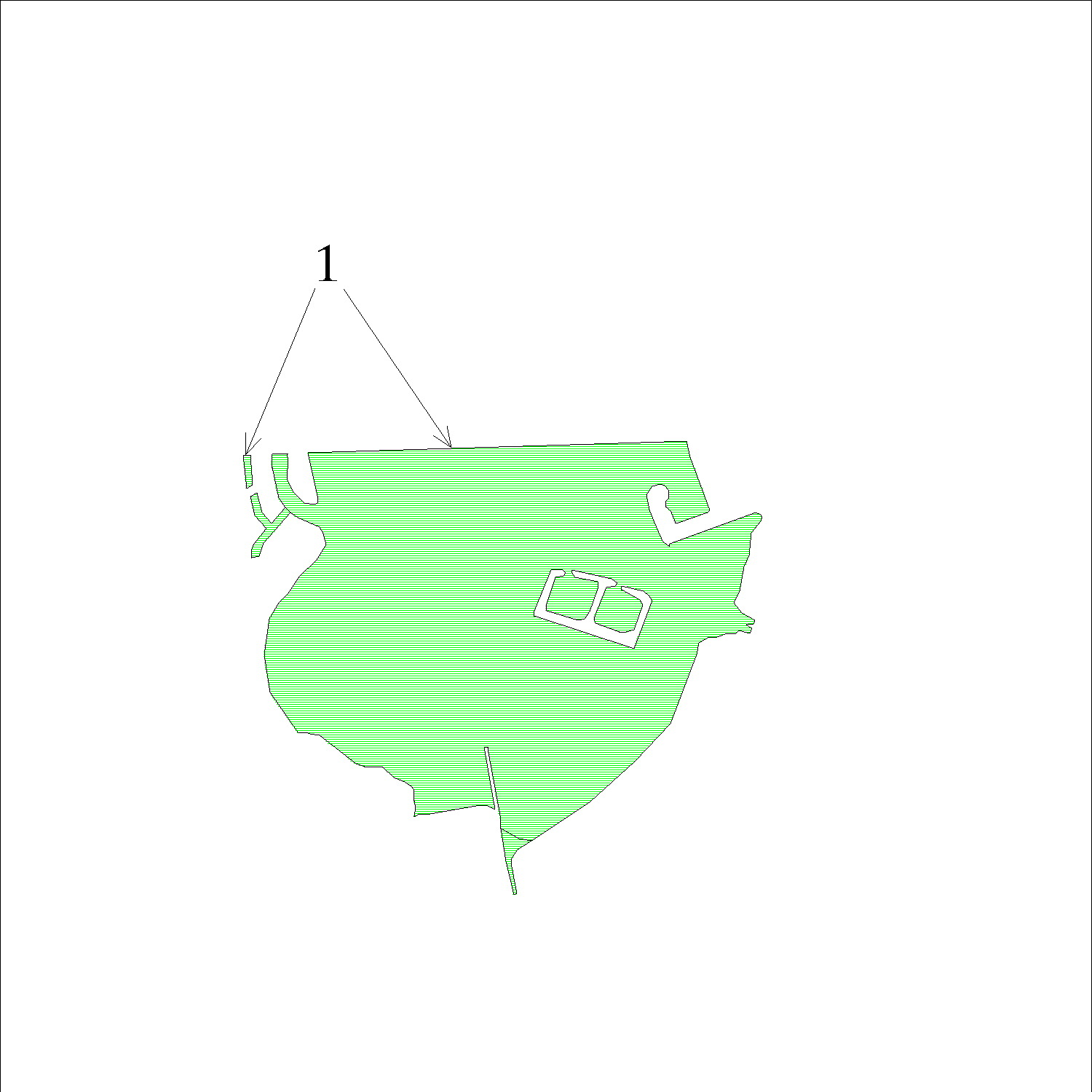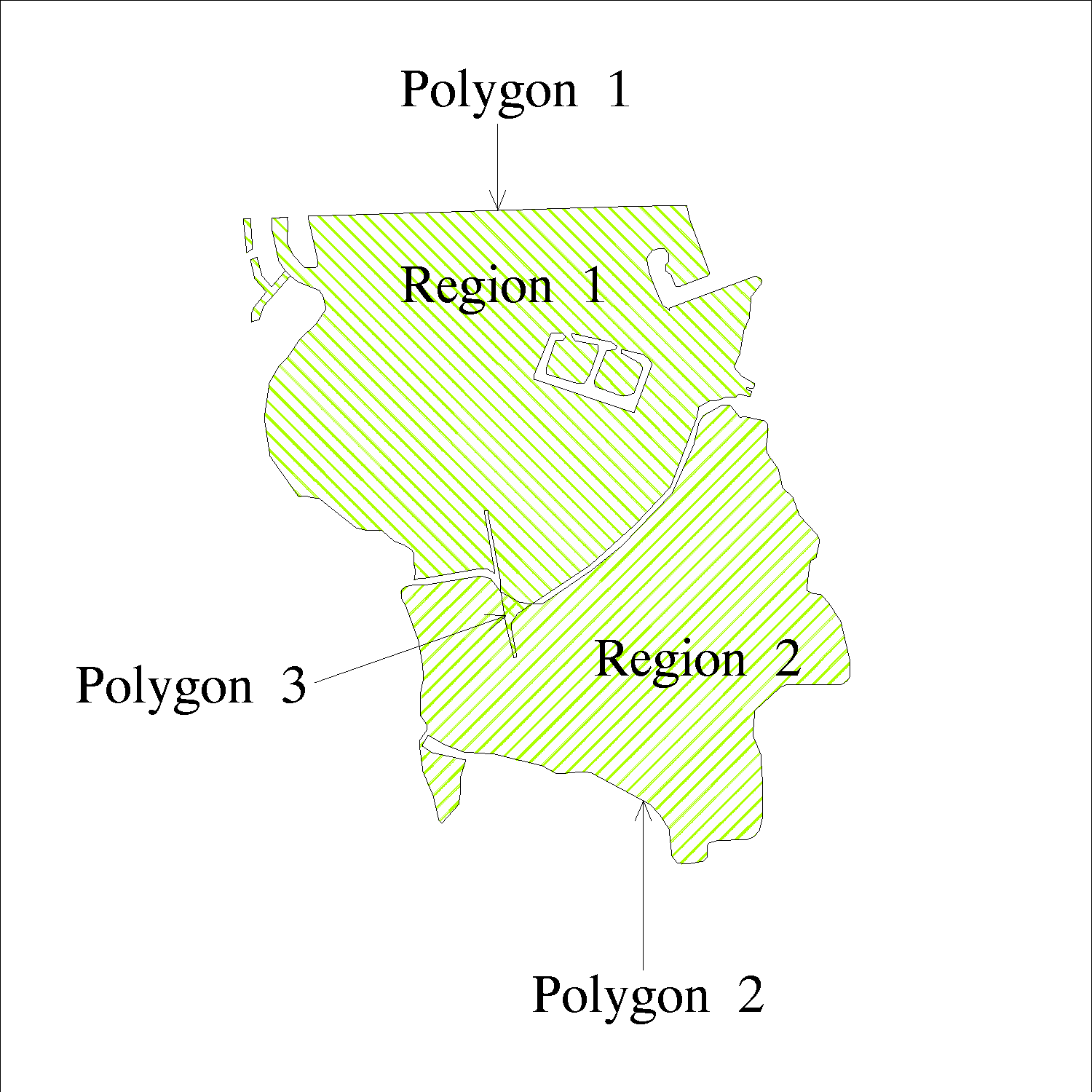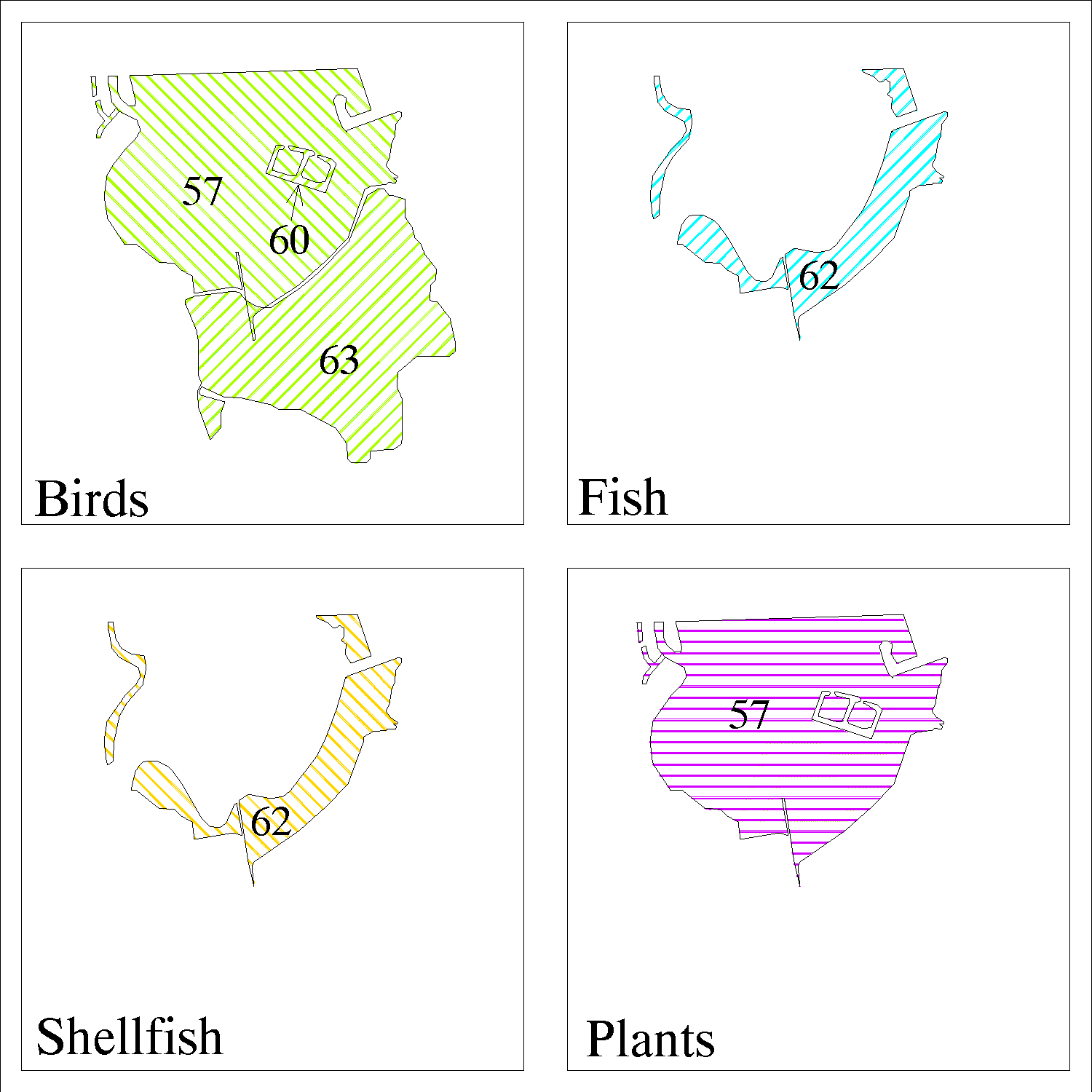Environmental Sensitivity Index maps have been developed to map coastal areas to prepare and respond oil spills. The ESI data represent the wildlife and habitats which are sensitive to spilled oil. Regions are implemented to store, edit and create maps which consist of numerous overlapping polygons and detailed relational database tables. This paper describes the data structure used to store, manipulate and display numerous biological and human-use layers of information.
ESI MAPPING Describe quickly the history of esi mapping. GIS DATA STRUCTURE FOR ESI MAPPING ESI data characterize coastal environments and wildlife by their sensitivity to spilled oil. There are three main components to describing the sensitive features: shoreline habitats, sensitive biological resources, and human-use resources. There are many layers of information which are gathered and either digitized or reformated to match the data structure. The following coverages comprise an ESI atlas: ESI - classified shorelines and habitat polygons HYDRO - water and land polygons and linear streams INDEX - quad boundary polygons MANAGEMENT - managed land regions SOCECON - human-use point and line resources MAMMALS - terrestrial and marine mammal regions BIRDS - bird regions NESTS - bird nesting point locations FISH - fish regions SHELLFISH - mollusc and crustacean species REPTILES - reptile regions ESI Shoreline Geomorphology: The ESI coverage contains both linear shoreline geomorphology as well as polygonal habitats which are marine or tidally influenced. Each line and polygon feature is classified according to the suscept- ability of impact to oil spills. The classification varies by geographic condition, but generally has the following categories: ESI RANK DEFINITION 1 Exposed, impermeable vertical substrates 2 Exposed, impermeable non-vertical substrates 3 Semi-permeable substrate, low potential for oil penetration and burial 4 Medium permeability, moderate potential for oil penetration and burial 5 Medium-to-high permeability, high potential for oil penetration and burial 6 High permeability, high potential for oil penetration and burial 7 Exposed, flat, permeable substrate 8 Sheltered impermeable substrate, hard 9 Sheltered, flat, semi-permeable substrate, soft 10 Vegetated wetlands The classification of shoreline habitats are modified to adapt to site specific conditions and in many cases the shorelines are ranked with multiple codes such as 10/2. Also included in the ESI coverage is a code to describe the arc feature: FEATURE CODE DEFINITION S Shoreline I Index or map/quad boundary H Hydrography or streams P Pier B Breakwater O Other arcs which form the boundary for ESI polygons but are not shoreline. To document the digitizing process for ESI classification an attribute is included with every feature for the source of the data. The source codes are: SOURCE CODE DEFINITION 0 Digital data (provider documented in the Meta Data Report for each atlas) 1 Ground truth 2 Aerial photograph 3 Digitized from USGS topographic quadrangle 4 Line approximated to ensure edgematching 5 Digitized on-screen from scanned USGS quad. Basemap Coverages: The coverage HYDRO contains polygonal water and land features as well as all tidally influenced linear stream features. Also included in this coverage are all annotations which are present in the water portion of USGS topographic quadrangles as well as many others which have been identified as important land features. The coverage INDEX contains polygons for all 7.5 minute USGS topographic quadrangles in the atlas. Each polygon is attributed for quad name (including date or revised date), the scale at which the map is produced, the map angle used to rotate the coverage so that north is truly at the top of the map, and the page size of the map. Human-Use Coverages: The are many human-use (or socio-economic) features which are important for preparing or responding for oil spills. These are generally impacted either economically due to polution, operationally as people and equipment are brought in to clean up the site or are sensitive human resources which must be protected. The following features are mapped in an ESI atlas: FEATURE DEFINITION A2 Access A Airport AQ Aquaculture AS Archaeological Site B State Beach BR Boat Ramp CF Commercial Fishing CG Coast Guard CP Campground F2 Factory HS Historical Site H Hoist IR Indian Reservation IB International Border LS Log Storage M Marina M2 Mining MS Marine Sanctuary NP National Park OF Oil Facility P Regional or State Park PF Platform PL Pipeline RB Recreational Beach RF Recreational Fishing S Subsistence SB State Border V Village WI Water Intake WR Wildlife Refuge Each feature in the SOCECON and MANAGEMENT coverages contains a unique identifier, termed RARNUM or resource at risk number, which is linked to an Oracle table which stores items such as the contact person, the owner of the facility, the phone number and site specific comments such as the number of slips at a marina. Biological Coverages: Coverages for biological data are developed for each major element of the ESI atlas. The coverages include: BIRD, FISH, SHELLFISH, REPTILE, MAMMAL and PLANT. For many atlases, bird nesting sites are also digitized in a NEST coverage with point topology. The following subelements are collected for each element: ELEMENT SUBELEMENT Marine Mammal Dolphin, Manatee, Sea Lion, Sea Otter, Seal, and Whale Terrestrial Mammal Bear, Deer, Mustelid, Rodent Bird Alcid, Diving Coastal Bird, Gull/Tern, Pelagic, Raptor, Shorebird, Wading Bird, and Waterfowl Fish Anadromous, Beach Spawner, Kelp Spawner, Nursery Area, Reef Fish, and Special Concentration Shellfish Abalone, Clam, Conch/Whelk, Mussel, Oyster, Scallop, Squid/Octopus, Coral Reef, Crab, Lobster, and Shrimp Reptile Alligator/Crocodile, and Sea Turtle The release of ArcInfo rev. 7.0.2 enables the biological data, which is complex, to be topologically stored as regions. The following section describes the use of region topology to store the complex polygons and tabular data. IMPLEMENTATION OF REGIONS The biological data in ESI atlases are complex structures due to the natural mixture of several species within and across habitat types. To describe the efficiency of data storage, editting and reproduction of the complex data a small portion of an area in Southern California is descrbe for the presence of birds (Figure 1). In this example a discon- tiguous region is one where multiple, nonadjacent, polygons are grouped together to form one region. This method of labeling, or attributing a database is efficient for data storage and quality control.

Another type of region is the overlapping region where only two attributes are entered (Figure 2). For instance, Polygon 1 and Polygon 3 contain the same species and are defined as Region 1 and Polygon 2 and Polygon 3 contain the same species and are defined as Region 2. In this example Polygon 3 is used for both Region 1 and Region 2.

In the ESI database, all biological elements (and therefore species) may be in geographic combination which is difficult to maintain at the polygon level, but easier from a data management perspective at the region level of topology because there is minimal data redundancy. For example, there are multiple coverages with the same RARNUMs for birds, fish, shellfish and plants (Figure 3). These seperate coverage share many arcs and polygons and regions. In this example, unique identifiers (RARNUMs) are shown for each region and each region may be comprised of one or more polygons. Although the elements are stored in seperate coverages, the linkage of RARNUMs enables the database to remain efficient. This is evidenced by Region 57 which is in the BIRDS and PLANTS coverages and Region 62 which in in the FISH and SHELLFISH coverages. Another example of a discontiguous region is RARNUM 62. In polygon topology the value 62 would be entered for all four polygons in the FISH coverage and also the four polygons in the SHELLFISH coverage. This polygon data structure is redundent, it increases the probability of a data entry error and it limits the analytical power of the database.

For each RARNUM there is an Oracle Table (BIO_RES) which specifies the contents of the region. Table 1. Contents of Oracle table BIO_RES which correspond to Figure 1. RARNUM SPECIES CONCENTRATION SEASONALITY EXPERT ELEMENT 57 85 HIGH 1 58 BIRD 57 118 HIGH 2 58 BIRD 57 270 HIGH 1 58 BIRD 57 1001 HIGH 1 58 BIRD 57 1002 HIGH 1 58 BIRD 57 1003 HIGH 1 58 BIRD 57 1004 HIGH 1 58 BIRD 57 1005 MED 1 58 BIRD 57 1006 HIGH 1 58 BIRD 57 22 LOW 2 55 M_MAMMAL 57 1 HIGH 1 58 PLANT 60 85 HIGH 1 58 BIRD 60 270 HIGH 1 58 BIRD 62 225 HIGH 1 0 FISH 62 24 LOW 1 0 SHELLFISH 62 28 HIGH 1 0 SHELLFISH 62 66 HIGH 1 0 SHELLFISH 63 85 HIGH 1 58 BIRD 63 118 HIGH 1 58 BIRD 63 205 LOW 1 58 BIRD 63 270 1 0 BIRD 63 1001 HIGH 1 58 BIRD 63 1002 HIGH 1 58 BIRD 63 1004 HIGH 1 58 BIRD 63 1006 HIGH 1 58 BIRD The SPECIES and ELEMENT variables are used to link to the Oracle Table SPECIES which contains the common and latin names, abbreviation, and the status for threatened or endangered at the federal or state level. Table 2. SPECIES list for records in Table 1. SPECIESELEMENT SUBELEMENT NAME GEN_SPE S_F T_E 85 BIRD gull_tern California least ternSterna antillarum brow. F E 118 BIRD diving Brown pelican Pelecanus occidentalis F E 205 BIRD wading Light-footed clapper rail,Rallus longirostr. 270 BIRD shorebird Western snowy plover Charadrius alexandrinus. 1001 BIRD gull_tern Gulls 1002 BIRD shorebird Shorebirds 1003 BIRD waterfowl Waterfowl 1004 BIRD wading Wading birds 1005 BIRD raptor Raptors 1006 BIRD diving Diving birds 1 PLANT sav Eelgrass Zostera marina 225 FISH special California halibut Paralichthys ca. 22 M_MAMMAL sea_lion California sea lion Zalophus califo. 66 SHELLFISHclam California jackknife clam,Tagelus californianus 24 SHELLFISHclam Gaper clam Tresus nuttallii 28 SHELLFISHclam Pacific razor clam Siliqua patula The SEASONALITY and EXPERT columns from the BIO_RES table are linked to other tables which identify the months that species are present and the activity during those months, such as nesting or laying. The EXPERTS table contains a complete meta data reference for contacting specific places, agencies and personnel in the event of an oil spill. CONCLUSION This paper presented a format for organizing polygonal overlapping and discontiguous polygons as regions. These regions are linked to multiple Oracle Tables. The data structure is efficient, easily edited and has been implemented to produce map atlases. Currently, Research Planning Inc. has produced eleven GIS ESI atlases along the United States coastline and six atlases will be completed in 1995 using region topology. The transition from polygons to regions was almost effortless at the data entry stage; however, there was quite a learning curve in the aml process of producing the hard copy maps. Future goals are to reduce the biological coverages to just one coverage which will reduce the data redundency even further. However, we have decided to take gradual steps in the introduction of regions in order to minimize the length of time learning as well as become comfortable with the new techniques. ACKNOWLEDGEMENTS: I would like to thank Mr. William Holton, the System Administrator at RPI, for quickly producing the graphics used in the paper.